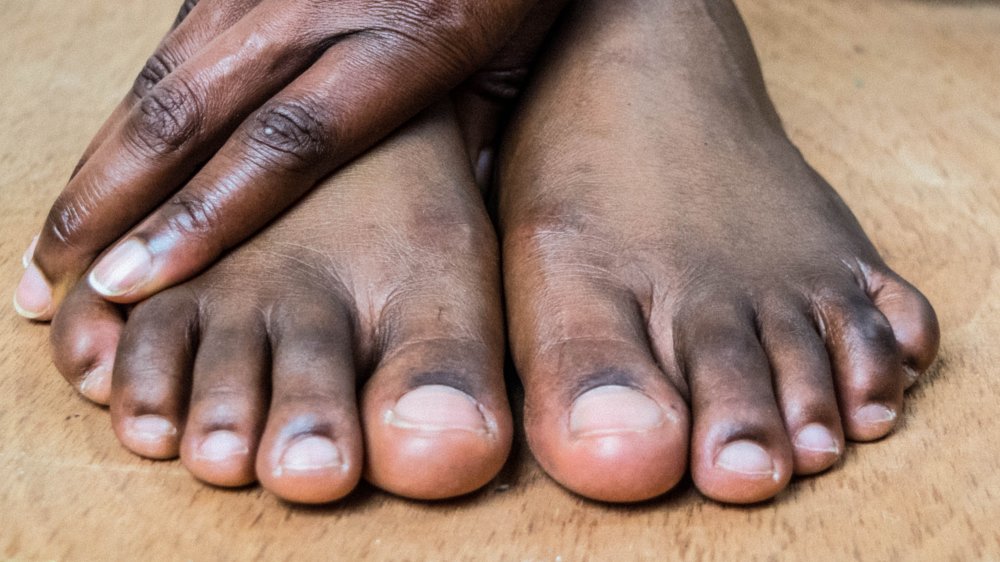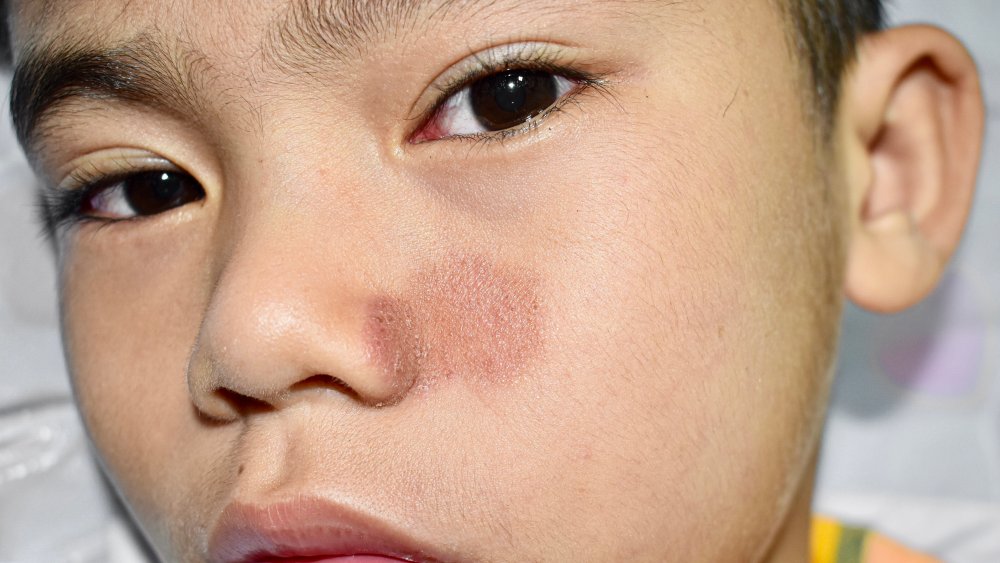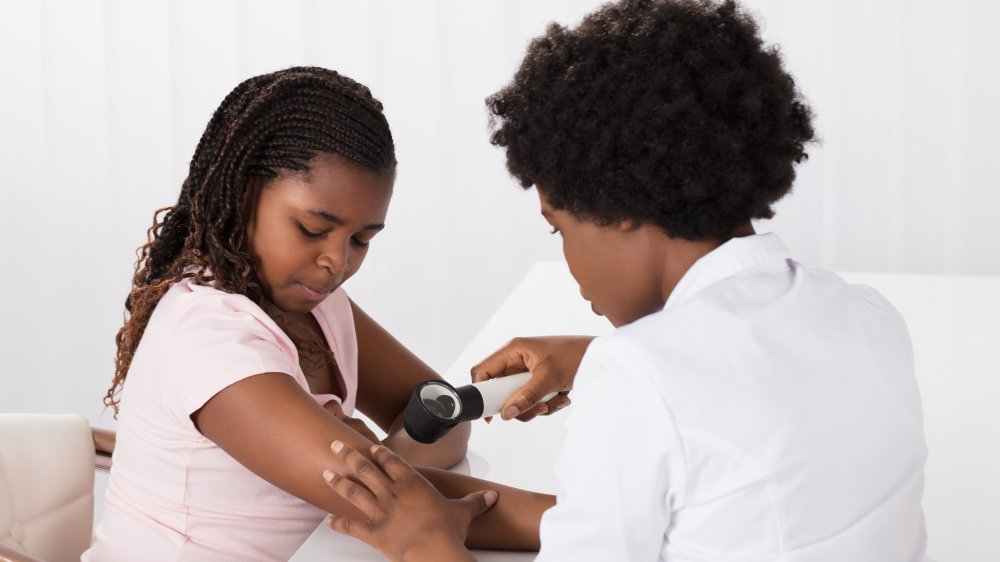How 'COVID Toes' Exposed Lack Of Diversity In Dermatology Photos
While the COVID-19 pandemic has been a part of our lives for more than six months now (yes, really!), our understanding of just what it is, what it does, and what it looks like is still unfolding. In the early days, we looked only for fever, coughing, and shortness of breath — symptoms that could also easily be mistaken for those of flu, seasonal allergies, or other common wintertime maladies. (By mid-March, anyone with even a mild cold was afraid to cough or sneeze in public lest they be shunned like Typhoid Mary.)
By springtime, new coronavirus symptoms started showing up in doctor's offices nationwide, symptoms including chills, shaking, muscle aches, headaches, sore throats, loss of taste or smell, blood clots, and even an unusual skin condition resembling frostbite present on the feet and fingers. This last condition, dubbed 'COVID toes,' was more commonly found in younger patients (via ABC), but, what's more to the point, The New York Times discloses that this symptom was also seen, or at least recognized, primarily on the toes (and fingers) of Caucasian patients.
Dermatologists often can't recognize discoloration on darker skin
As with just about any phenomenon of the early 21st century, once 'COVID toes' became a thing, photos immediately started popping up all over social media. Luckily, social media, on the whole, is sufficiently aware of the fact that nearly all of the little piggies in the photos were pink, and this did not go unnoticed or unremarked on. Did this lack of photographic evidence mean that this symptom was one only experienced by people of European descent? Odd, seeing as how people of color have been disproportionately affected by the pandemic as a whole. Why would this one symptom be something they did not experience?
Well, as it turns out, 'COVID toes' do affect a far wider range of tootsies than Instagram depicted, but this was not widely known due to the fact that doctors themselves were having difficulties recognizing them on BIPOC patients. As the Times reports, skin conditions that manifest as discoloration (reddish or purplish patches) are often far more difficult for dermatologists to diagnose when they appear on darker-colored skin.
Dermatologists may be missing a wide range of skin conditions in patients of color
Darker skin can cause a problem for dermatologists when it comes to diagnosing, and thus treating, a large number of skin maladies. The Journal of the American Academy of Dermatology (via NCBI) published a study showing that undiagnosed psoriasis is prevalent among non-white patients, while the Times says eczema, rosacea, and pityriasis rosea also manifest differently in people of color and are often missed (or misdiagnosed) by doctors.
One of the most dangerous conditions that may not be easy to recognize in darker-skinned patients is melanoma, which is the most serious form of skin cancer. In African Americans, this condition often develops on the palms of the hands or the soles of the feet, both places doctors may not be looking. Skin color may even play a role in detecting whether a patient is suffering from blood loss or lack of oxygen.
How the medical community is trying to address this problem
Dermatologists admit that there's an ongoing problem when it comes to detecting skin conditions of all kinds in patients of color. As Dr. Jenna Lester, director of the skin of color program at the University of California, San Francisco, told the Times, "Pattern recognition is central to dermatology, and a lot of the pattern recognition is training your eye to recognize certain colors that trigger you to think of certain diseases." She goes on to explain, however, that "the color in question is impacted by the surrounding color," and the difficulty lies in the fact that this color "can look different in darker skin. If you're only trained to look at something in one color, you won't recognize it in another color."
While most of the images in currently available medical textbooks depict dermatological conditions affecting Caucasian skin (the Times cites a figure of 90 percent), there's a movement afoot to correct this disparity. Dr. Susan Taylor, associate professor of dermatology at the University of Pennsylvania Perelman School of Medicine, has co-authored a book called Dermatology for Skin of Color, but hopes that in the future such information will be incorporated into the standard med school textbooks. In the meantime, however, dermatologists are even making use of crowd-sourced information such as the Instagram feed Brown Skin Matters where photos are reviewed by a physician before being posted as examples of what skin conditions look like on non-white skin.




